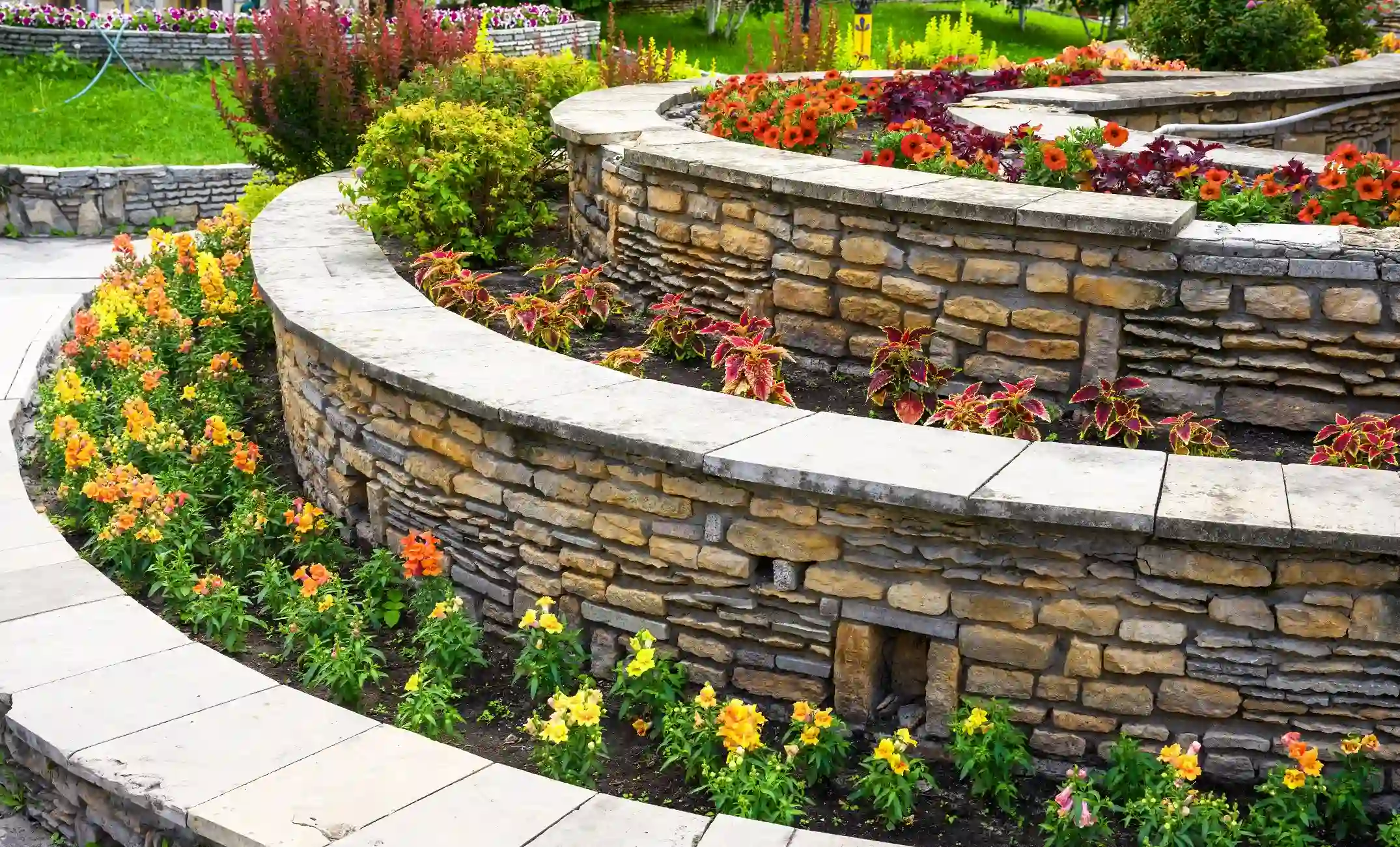
In modern landscaping, few elements balance form and function as gracefully as retaining walls. Often underestimated, these structural installations serve a vital purpose in shaping, protecting, and beautifying outdoor spaces. Whether it’s preventing soil erosion, managing sloped terrain, or creating usable flat areas, retaining walls bring order and strength to otherwise unpredictable landscapes.
However, retaining wall construction is far more complex than stacking a few stones or blocks. It requires engineering knowledge, materials expertise, and artistic vision—making it a task best left to professionals. That’s where a Landscapes Retaining Wall Contractor becomes an essential partner in any landscaping project.
In this article, we will explore the importance of retaining walls, the value of hiring a specialized contractor, the materials and techniques involved, and how experts like JH Landscapes Retaining Wall Contractor ensure your wall is not only structurally sound but also visually stunning.
Why Retaining Walls Are a Crucial Landscaping Element
Retaining walls are engineered structures designed to hold back soil and manage elevation changes. But their benefits extend far beyond just preventing landslides. Here’s what retaining walls add to a landscape:
1. Erosion Control
In areas where rainfall or irrigation can wash soil away, retaining walls hold the ground in place, protecting gardens, pathways, and building foundations.
2. Slope Management
Properties with steep grades can be transformed using terracing supported by retaining walls, allowing for functional spaces like gardens, patios, or walkways.
3. Increased Usable Space
Without structural support, sloped areas are often unusable. Retaining walls flatten those zones, maximizing the utility of your outdoor space.
4. Improved Drainage
Many walls are built with integrated drainage systems to prevent water buildup, which can lead to erosion, root damage, or structural instability.
5. Aesthetic Value
With endless options in texture, color, and style, retaining walls can act as focal points in the landscape, defining space and enhancing visual appeal.
These functions make retaining walls foundational—not optional—when designing sustainable, attractive landscapes.
What a Landscapes Retaining Wall Contractor Brings to the Table
Constructing a retaining wall that’s durable, code-compliant, and visually appealing demands more than DIY enthusiasm. A Landscapes Retaining Wall Contractor brings critical expertise in areas such as:
1. Site Assessment and Planning
Before construction begins, a contractor analyzes soil conditions, drainage patterns, slope grades, and load-bearing requirements to determine the most effective wall type.
2. Material Selection
Not all materials are created equal. Professionals help choose between concrete blocks, natural stone, timber, or modular systems based on budget, environment, and design.
3. Structural Integrity
Proper wall construction involves geogrid reinforcement, base compaction, backfill materials, and weep hole placement. Skipping these steps can lead to costly failures.
4. Drainage Solutions
Without appropriate drainage, water pressure builds behind the wall, potentially causing collapse. Contractors integrate gravel backfill, perforated pipes, and weep holes for safety.
5. Aesthetic Integration
A skilled contractor ensures the retaining wall complements the overall landscape, blending structure with the natural or designed elements around it.
Working with specialists like JH Landscapes Retaining Wall Contractor ensures these critical components are handled expertly from start to finish.
Types of Retaining Walls
There are several types of retaining walls, each with specific applications and advantages. A Landscapes Retaining Wall Contractor can guide you in selecting the right style based on your property’s conditions.
1. Gravity Walls
These rely on sheer mass to resist pressure. Typically constructed from stone or concrete, they’re ideal for shorter walls where space allows a wide base.
2. Cantilevered Walls
Using a reinforced concrete base and stem, these walls convert horizontal pressure into vertical force. They require less material than gravity walls but more precise engineering.
3. Sheet Piling Walls
Used where space is limited and soil is soft, these consist of steel, vinyl, or wood planks driven into the ground. Ideal for waterfront properties or tight urban spaces.
4. Anchored Walls
This style uses cables or other supports anchored deep into the soil. It’s often employed when the wall must withstand heavy loads or when other designs aren’t feasible.
5. Segmental Retaining Walls (SRW)
Popular in modern landscaping, SRWs use interlocking concrete blocks and can be built without mortar. They’re highly flexible and visually customizable.
Choosing the Right Materials for Your Retaining Wall
The material you choose affects not just the look of your wall but also its longevity, cost, and maintenance needs. A trusted Landscapes Retaining Wall Contractor helps weigh the pros and cons of each.
1. Concrete Block
Durable, customizable, and relatively easy to install. Offers various colors, shapes, and finishes to match your landscape.
2. Natural Stone
Timeless and elegant, stone offers a high-end appearance. Each piece is unique, creating a rustic yet refined finish.
3. Timber
Wood walls offer a natural look and are quick to build. However, they are best suited for shorter walls and may not last as long as masonry options.
4. Brick
Charming and classic, brick walls require a skilled mason but offer high visual appeal and moderate durability.
5. Gabion
These are wire baskets filled with rocks, ideal for modern or industrial aesthetics. Highly effective in drainage and erosion control.
Selecting the right material ensures your wall performs well and aligns with your overall landscaping goals.
The Construction Process: Step-by-Step
While the exact process varies based on wall type and location, most projects follow a similar structure:
- Site Inspection and Planning
- Grade assessment
- Soil analysis
- Wall layout and permits (if needed)
- Grade assessment
- Excavation and Base Preparation
- Digging a trench below frost line
- Installing a compacted gravel base
- Digging a trench below frost line
- Wall Construction
- Layering material
- Adding geogrid or anchors
- Backfilling with gravel and soil
- Layering material
- Drainage Integration
- Installing perforated pipes or weep holes
- Ensuring water can flow away from wall
- Installing perforated pipes or weep holes
- Finishing Touches
- Caps or coping stones
- Cleaning and sealing (if applicable)
- Caps or coping stones
- Inspection and Cleanup
- Checking for structural integrity
- Final adjustments to blending with the landscape
- Checking for structural integrity
With professionals like JH Landscapes Retaining Wall Contractor, every step is handled to meet both aesthetic goals and structural requirements.
Common Challenges and How Contractors Overcome Them
Even the best-designed walls face environmental and technical hurdles. A seasoned Landscapes Retaining Wall Contractor anticipates and addresses these issues:
- Soil Movement: Solutions include deeper footings and reinforcement.
- Hydrostatic Pressure: Proper drainage prevents water buildup behind the wall.
- Frost Heave: Building below the frost line and using compacted gravel reduces movement.
- Vegetation Interference: Contractors avoid root systems or use root barriers.
- Design Flaws: Professionals use precise measurements and planning tools to prevent bulges or leaning.
By managing these challenges proactively, contractors ensure long-term performance and appearance.
How to Choose the Right Landscapes Retaining Wall Contractor
The success of your retaining wall project hinges on the contractor you hire. Look for:
- Experience and Portfolio: Proven results in similar projects
- Certifications and Insurance: Compliance with safety and legal standards
- Client Testimonials: Positive reviews and word-of-mouth referrals
- Detailed Estimates: Transparent pricing and timelines
- Communication: Clear and consistent from planning to project completion
Hiring a professional like JH Landscapes Retaining Wall Contractor means working with a team that prioritizes safety, durability, and design excellence.
Conclusion: Strength Meets Style
Retaining walls are among the most transformative elements in landscaping. They shape land, prevent erosion, and define the flow and functionality of outdoor spaces. But when done right, they also become a central design feature—one that enhances both property value and daily living experience.
A Landscapes Retaining Wall Contractor ensures that your wall stands tall against time, weather, and shifting soil, all while complementing your landscape’s aesthetic vision. From consultation and material selection to final installation, these professionals bridge engineering and artistry.
Whether you’re leveling a yard, terracing a hillside, or adding elegance to a garden, partnering with a reliable expert like JH Landscapes Retaining Wall Contractor guarantees results that are as strong as they are stunning.
Business Name: JH Landscapes
Address: 2307 Waxhaw-Marvin Rd, Waxhaw, NC 28173
Phone number: (704) 999-0976





